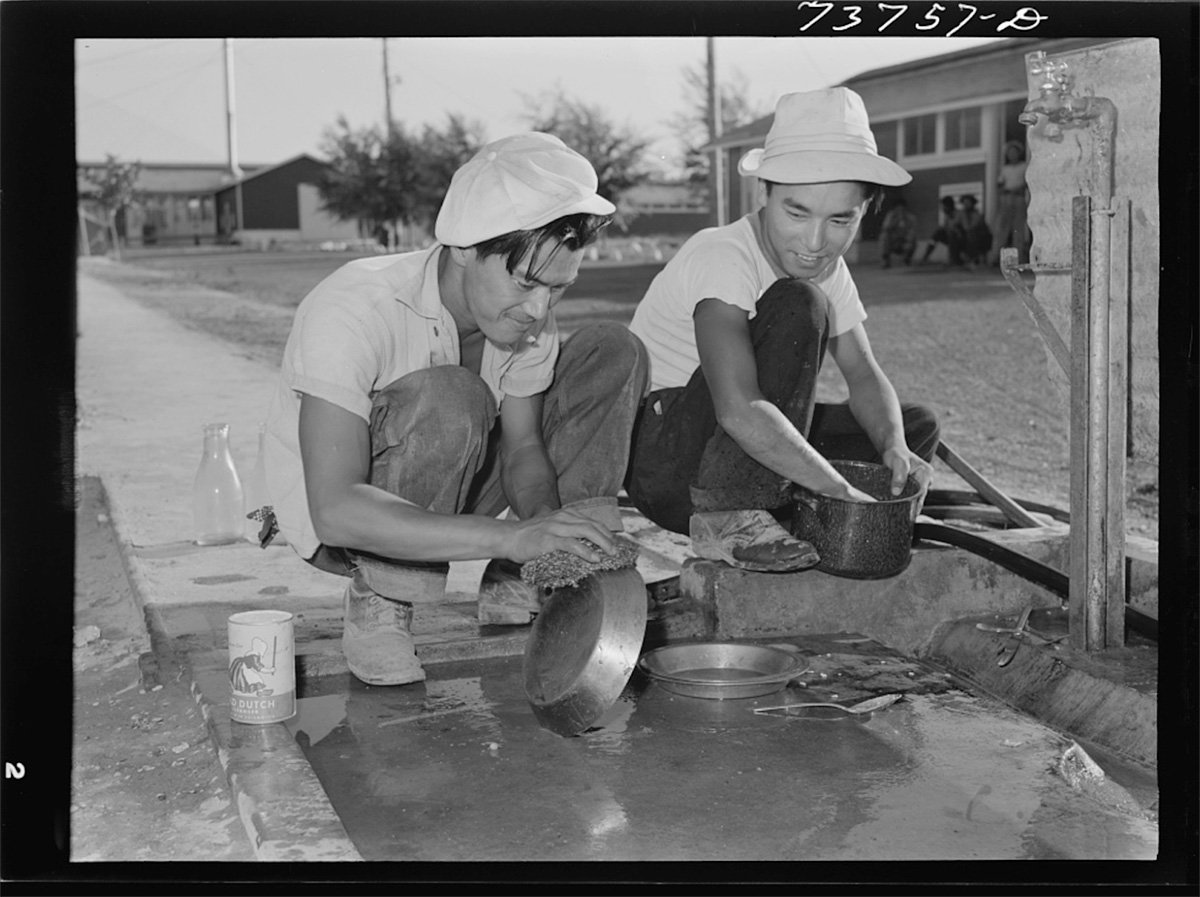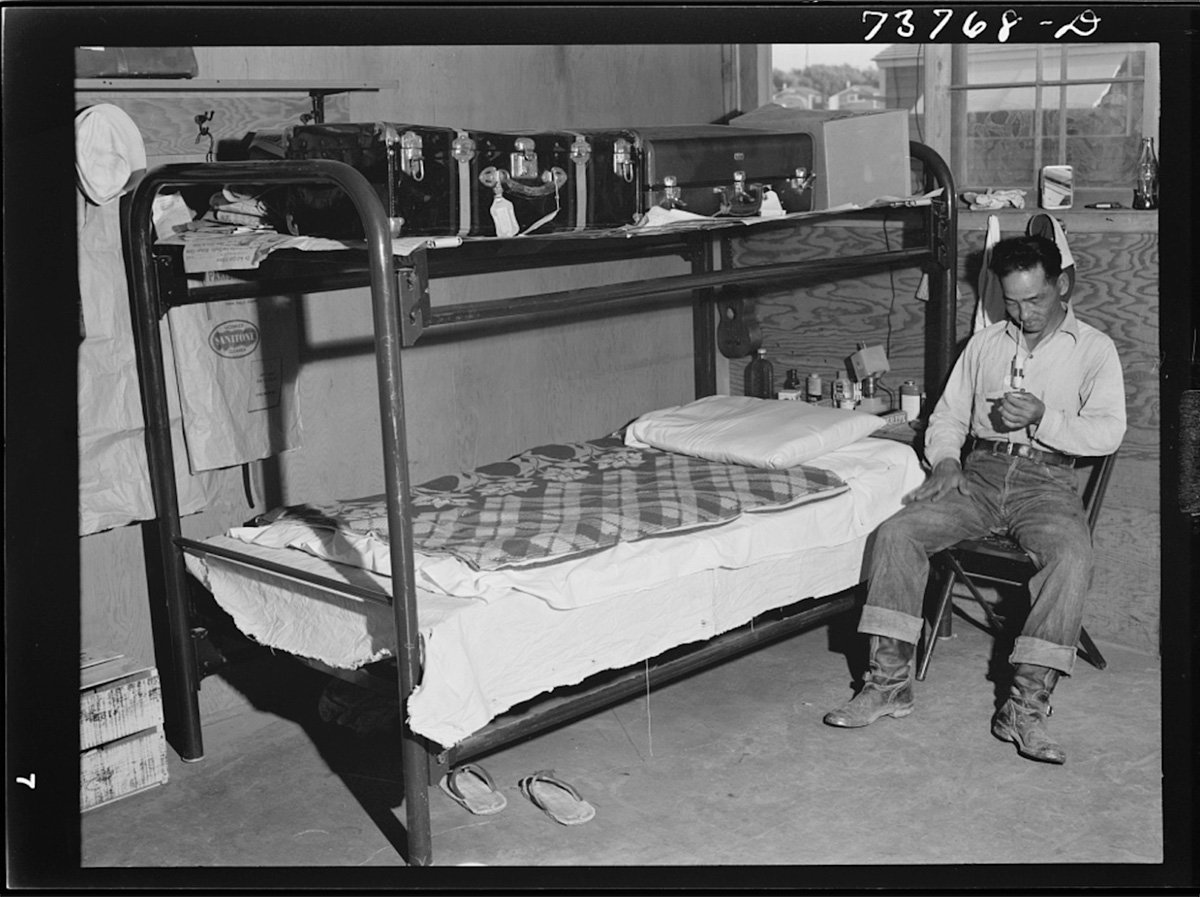El Milagro - The Miracle
El Milagro - The Miracle
By Camille Daw, Program and Outreach Manager
In September 2023, Friends of Minidoka staff visited El Milagro with attendees from the Removal and Remembrance tour as part of the American Association for State and Local History conference hosted in Boise. The site, located in Twin Falls, Idaho contains a long legacy of agricultural labor on the backs of individuals who history had almost ignored– until now.
Originally managed by the Resettlement Administration, aimed to help farmers and families from the American midwest and south relocate throughout the Great Depression Dust Bowl, the site’s use quickly pivoted. The Resettlement Administration dissolved into the Farm Security Administration (FSA), which with the onset of World War II sought to continue agricultural production by providing housing, medical services, and education to families. The FSA oversaw two types of camps; temporary, seasonal tent camps, and year-round camps with more structured housing. The Twin Falls Labor Camp, later called El Milagro, operated as a year-round camp.
Constructed in 1939, the Twin Falls Labor Camp’s purpose during World War II centered around migratory and seasonal labor. In October 1943, population statics noted that the residents included “250 Japanese, 175 whites, 100 Mexicans, and 50 Jamaicans.” Thirty-six barrack style buildings housed seasonal workers. The predominantly bachelor men who lived in these buildings shared sanitation and dining facilities.
In 1940, only one year after finishing construction, over forty families lived at the Twin Falls Labor Camp. Families typically lived in single family homes, later known as casitas. The casitas, identical in shape and style, included two rooms, a joint kitchen and living room, and a bathroom whereas individuals living in the barracks shared their sanitation and dining facilities. The casitas frequently housed families living in Twin Falls year round whereas the barrack style buildings housed seasonal residents. However, if residents occupied all of the seasonal family homes, families lived in the barrack buildings until another family vacated their casita.
Throughout the war, Japanese Americans living at the Twin Falls Labor Camp remained prisoners and could not leave the camp without permission and supervision from FSA personnel. Though the camp contained no barbed wire, they remained prisoners under the United States.
Following the war, the Twin Falls Labor Camp purpose and use changed as the agricultural production of Twin Falls heavily depended on migratory labor. Individuals of all backgrounds and countries of origin utilized the resources of the labor camp. After significant physical decline to the site appeared, the Idaho Migrant Council (now the Community Council of Idaho), purchased the site in 1988 and revitalized the housing and services available.
The Community Council of Idaho,(CC Idaho) the largest nonprofit organization in Idaho, now oversees the site, much of which has been renovated to accommodate the needs of the communities they serve. Housing is only one of the many services they provide to migrant and seasonal workers; other services include education, health services, and legal assistance among many other offerings that help families.
In their overhaul of the site, the CC Idaho found one historic barrack-style building and a bathroom facility building remained at the site from the time of the Twin Falls Labor Camp’s construction in 1939. Over a dozen of the casitas remain as well. Both the barrack style building, bathroom facility building, along with the casitas show signs of disrepair. The CC Idaho developed plans to demolish many of the casitas, opting for houses with better safety, space, and aesthetics for the communities they serve. During the initial phases of this project, the CC Idaho found these buildings and applied for a grant through the Mellon Foundation to preserve them and add interpretation in English and Spanish at the site.
In 1990, the Idaho Migrant Council renamed the site “El Milagro” which stands for “the Miracle.” In an address to conference attendees, Terry Blom, the director of Community Relations for the Community Council of Idaho explained how the beginnings of the site started with the barrack style buildings. “Those buildings out there, those are my miracles, in my opinion,” Terry remarked.
The Oregon Heritage Commission also created a traveling exhibit titled “Uprooted: Japanese American Farm Labor Camps during World War II,” with photographs from FSA photographer Russell Lee depicting the realities of the farm labor camps and the impacts of Japanese Americans on agriculture. Learn more about the exhibit and access resources here.
To learn more about El Milagro, visit the Historic Context created by Historical Research Associates.
To learn more about the important work of the Community Council of Idaho, visit their website.





